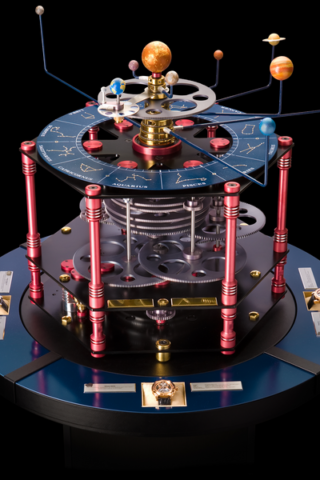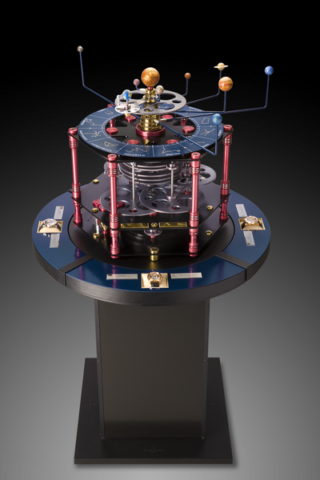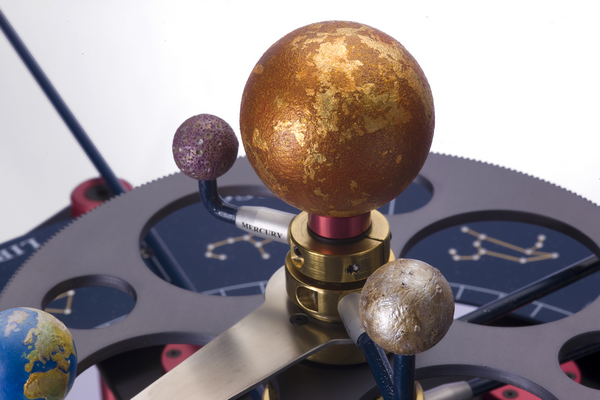The Meteoris Solar System, is a planetarium depicting the entire Solar System, a truly unique innovation from Louis Moinet.

Mercury, Venus, the Earth, Moon, Mars, Jupiter, Saturn, Uranus, Neptune and Pluto are all represented gravitating around the Sun – a considerable technical feat since most planetariums have previously depicted only a limited number of planets.
Louis Moinet’s Meteoris planetarium also serves as a showcase for four stunning unique tourbillon timepieces, each featuring a rare meteorite: Tourbillon Mars, Tourbillon Rosetta Stone, Tourbillon Asteroid and Tourbillon Moon.
Meteoris is spectacular thanks to the accelerated speed of the planetary rotations that it simulates. The Earth, for example, rotates around the Meteoris’ Sun in 37 seconds, rather than 365 days.
Mechanical artist and astronomical clock engineer Rémy Chauvin designed the Meteoris mechanism which comprises 10 coaxial tubes, each one linked to a Solar System body. These tubes are driven by a complex set of 40 gears which in turn are driven by a reducer micro-motor.
The midnight-blue lacquered dial indicates the position of each body within the zodiac sign through which it is crossing.



Each of the 12 constellations is adorned with gold dust and the 154 stars are represented by rhodium set with Top Wesselton VVS diamonds totalling 5.60 carats.
The galactic bodies were all crafted by artist Jean-Yves Kervévan, using hand-made resins and varnishes. Mars and the Moon are coated with dust from genuine Martian and Lunar meteorites.
The Sahara 99555 meteorite – estimated as 4.6 billion years old, making it the oldest known rock in our Solar System – has yielded a powder that has been applied to the model of Mercury, a planet from which this rock may well have originated.
The Sun is dusted with particles from the mysterious Itqiy meteorite while the Earth is coated with powder from rare rocks found in the Sultanate of Oman.
Finally, the Earth and its Moon are mounted on a subdial providing direct indication of moon phases, portrayed in mother-of-pearl and blue-tinted lacquer speckled with silver spangles.
